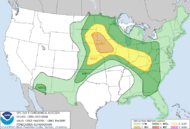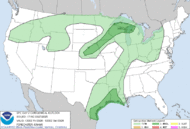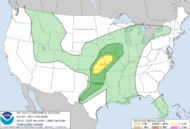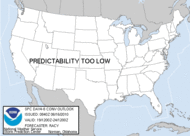
1/21/10 Huntsville tornado, by LeAnn Shady Reid
Severe Weather Awareness Week Continues...
Florence Times Daily
Clanton Advertiser
From Birmingham NWS:
...Tornado Awareness Day....
...Special Weekly Radio test message today at 9:00 am...
This week has been proclaimed Severe Weather Awareness Week in Alabama by Governor Bob Riley. During this special week, Alabamians are encouraged to learn and or review the proper safety precautions necessary for protecting their lives during severe weather.
The National Weather Service Office in Birmingham will conduct the weekly NOAA Weather Radio All Hazards test at the special time of 9:00 am today, Wednesday, February 24th. This time will replace the weekly radio test normally performed between 11 am and noon each Wednesday. The information message going along with this weekly radio test will highlight appropriate preparedness and safety precautions concerning tornadoes. If inclement weather develops today, this special weekly radio test will be postponed until Friday, February 26th, at 9:00 am.
Severe Weather Awareness Week continues today with a closer look at tornadoes and tornado safety. The months of March through May are known as the Spring Severe Weather Season. A Fall Severe Weather Season also exists from November through mid December. Alabama is one of the few locations in the world that has two distinct severe weather seasons.
A tornado is defined as a violently rotating column of air that is in contact with the ground. if the circulation is not on the
ground, then it is defined as a funnel cloud. Tornadoes usually descend from thunderstorms. Wind speeds in tornadoes can range from 65 miles per hour to 318 miles per hour, the highest tornado wind speed ever recorded. Your safety depends on being constantly aware of the possibility of severe weather.
A Tornado Watch means that conditions are favorable for the development of severe thunderstorms and tornadoes in and close to the watch area. A watch is normally issued for a large area covering numerous counties. The watch is intended to give you time to review your safety rules. The sky may be sunny, but weather changes can take place quite rapidly.
A Tornado Warning means that a developing tornado has been detected by National Weather Service Doppler Radar or has been reported on the ground by reliable sources. A Tornado Warning is typically issued for a portion of counties at a time and usually lasts no more than 45 minutes. If a Tornado Warning is issued for your county, you should seek shelter immediately. If you see a tornado or feel threatened, move to a safe place immediately, as precious seconds can save your life.
Here is some important information regarding Tornado Safety...
If you are in a home or small business, go to the basement or to a small interior room such as a closet, bathroom or interior
hallway without windows on the lowest level. Put as many walls between yourself and the outside as possible. If possible, get
under something sturdy, such as a heavy table, or use a mattress to protect yourself from flying debris. Most injuries associated with high winds are from flying debris, so remember to protect your head. If available, put on a bicycle or motorcycle helmet to protect yourself from head injuries.
If you are in a large business, school, hospital, shopping center or factory, go to the designated shelter area. If a shelter area is not available, the best place to go is an interior hallway on the lowest level. stay away from the structurally weaker
portions of buildings, such as windows and rooms with expansive roofs, which are more likely to collapse when tornadoes strike. Do not waste time opening windows in an attempt to prevent damage to a building. The old belief that damage could result from rapid pressure changes during a tornado is not true. It will not make any difference in a tornado if the window is open or not. Your safest course of action is to take shelter immediately when a tornado warning is issued for your area.










No comments:
Post a Comment